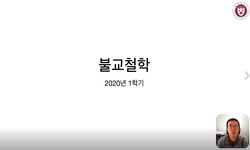동양은 서양의 근대 문명을 강요당했다. 동양의 지식인들은 서양의 근대 문명에 대해서 반발하기도 했지만, 점차 수용하였다. 수용 이후 서양의 문명과 문화는 지금까지 동양 전통에 뿌리를...
http://chineseinput.net/에서 pinyin(병음)방식으로 중국어를 변환할 수 있습니다.
변환된 중국어를 복사하여 사용하시면 됩니다.
- 中文 을 입력하시려면 zhongwen을 입력하시고 space를누르시면됩니다.
- 北京 을 입력하시려면 beijing을 입력하시고 space를 누르시면 됩니다.
https://www.riss.kr/link?id=A101820462
- 저자
- 발행기관
- 학술지명
- 권호사항
-
발행연도
2016
-
작성언어
Korean
-
주제어
서양철학 ; 동일률 ; 동서비교철학 ; 다원주의 ; 현상학 ; 불교 ; Western Philosophy ; Law of Identity ; Comparative Philosophy ; Pluralism ; Phenomenology ; Buddhism
-
자료형태
학술저널
-
수록면
145-181(37쪽)
- 제공처
- 소장기관
-
0
상세조회 -
0
다운로드
부가정보
국문 초록 (Abstract)
동양은 서양의 근대 문명을 강요당했다. 동양의 지식인들은 서양의 근대 문명에 대해서 반발하기도 했지만, 점차 수용하였다. 수용 이후 서양의 문명과 문화는 지금까지 동양 전통에 뿌리를 내리고 나름 긍정적인 역할도 하였으나, 점차 그 부정적인 측면도 드러내고 있는 상황이다. 서양 문명에 대한 동양 지식인의 태도는 여러 가지가 있지만, 이미 오래전부터 자주 동도서기(東道西器)론이 나오기도 하였다. 즉 동양의 정신적 가치나 도(道)를 간직하되, 서양의 문질문명은 배우자는 태도가 나오기도 하였다. 하지만 현재까지 동양과 서양의 차이에 대한 의미있고 체계적인 비교와 분석은 아직도 미진한 상황이다. 이 논문은 동양과 서양의 세계관 혹은 논리의 차이를 중심으로 비교 분석하여, 각각의 논리가 가지고 있는 특징에 주목함으로써 이러한 논리가 가지는 그 장점과 단점을 구명(究明)하여, 동양과 서양의 차이를 보다 선명하게 인식하고자 하는 데 있다. 여기서는 서양 근대문명에서 정점에 이른 고대 그리스 이후의 서양 동일률의 논리, 이를 비판적으로 해체하고 새로운 문법을 제시한 현상학의 동일성과 차이의 논리를 비교하고, 이러한 현상학적 논리와 매우 유사하면서도 근본적인 차원에서 아주 다른 동양 대승불교 전통의 부정의 논리를 사례에 따라 비교 설명하고 그 논리의 출발점에 대해서 사유함으로써 동양과 서양의 문화 전통이 가지고 있는 철학함(사유) 방식의 차이에 대해 살펴보고자 한다.
다국어 초록 (Multilingual Abstract)
The West forced the East on modernization, that is, on western modernization. Although some resisted such a forced western modernization, most of them gradually followed its path. After the accommodation of the western modernization into the East, it ...
The West forced the East on modernization, that is, on western modernization. Although some resisted such a forced western modernization, most of them gradually followed its path. After the accommodation of the western modernization into the East, it is in a certain sense true that the Western civilization and culture have been well settled into and had some positive contribution to the East, but it has also gradually disclosed its negative aspects in the process. The Eastern intellectuals took various postures to the Western civilization, and ‘The Western Container with the Eastern Spirit’(東道西器) is one of them. That is, although one needs to keep the Eastern spiritual value or Dao(道), one also have to learn the materialistic civilization from the West. However, up to date, it is really hard to find some meaningful and systematic comparison between the East and the West and also thorough analysis of the difference between them. This article will shed clearer light upon the difference between the East and the West by comparing and analyzing the worldviews of the East and the West and their following logical differences, paying attention to the peculiarities each logic puts forth, and investigating the advantages and disadvantages their respective logics have in their areas. Here, the author will compare the Western law of identity, which had reached at its height of prosperity in the modern period, and the phenomenological logics of identity and difference which deconstructed the law of identity and suggested a new grammar. The comparison work of this article will lead further into the negative logic of Mahayana Buddhism that is very similar to and, at the same time, fundamentally different from the phenomenological logics by comparing both of them case-by-case. In so doing, the article will reflect upon the differences of doing philosophy which the East and the West traditions of civilization have respectively kept by thinking of the beginning of their logics.
목차 (Table of Contents)
- 초록
- 1. 들어가는 말: 세상을 바라보는 세 개의 시선
- 2. 주어와 술어, 그리고 동일률
- 3. 형식논리학
- 4. 형식논리학에 대한 비판
- 초록
- 1. 들어가는 말: 세상을 바라보는 세 개의 시선
- 2. 주어와 술어, 그리고 동일률
- 3. 형식논리학
- 4. 형식논리학에 대한 비판
- V. 형식논리학과 동일성에 대한 하이데거의 비판
- VI. 형식논리학과 동일성에 대한 용수의 비판
- VII. 동일성의 존재론과 동일성과 차이의 존재론
- VIII. 나가는 말
- 참고문헌
- Abstract
동일학술지(권/호) 다른 논문
-
시간의 개념으로 살펴본 주일 예배에 대한 고찰 및 제언
- 감리교신학대학교
- 박해정(Park, Hae-Jung)
- 2016
-
제시카 벤자민의 “상호인정”으로 비추어보는 영성형성의 본질
- 감리교신학대학교
- 김기철(Kim, Gichul)
- 2016
-
- 감리교신학대학교
- 권진구(Kwon, Jingu)
- 2016
-
A Proposal for Methodist Mission and Methodist World Mission
- 감리교신학대학교
- Kim, MinSeok(김민석)
- 2016




 DBpia
DBpia







